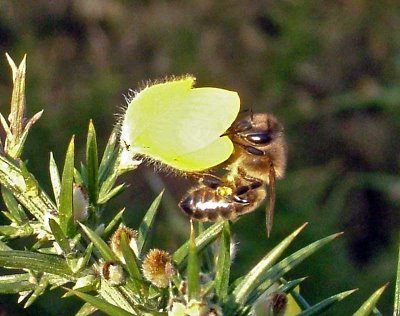 The first Honeybee of the year
The first Honeybee of the year
In the afternoon a chance to walk on Lancing Ring with the sun shining and feeling warm when sheltered from a cool northern wind. Good views were had of a Kestrel perching on Hawthorn overlooking the Vale of Halewick Lane.
 Kestrel
Kestrel
A fellow walker reported that they had heard on good authority that Red Kite were breeding nearby to the Sompting Down area.
An exersize to reveal the inhabitants of Gorse bushes was carried out with a white cloth held under a bush while it was tapped with a stick. (Considerable care is needed to avoid the needle sharp leaves of the Gorse).
The insects that were collected were nearly all small and hard to identify but some were possibly some kind of Seed Weevil, having as they did, a small snout.
 Apion ulicis. A Gorse Seed Weevil measuring about 3mm
Apion ulicis. A Gorse Seed Weevil measuring about 3mm
ID assistance from Malcolm Storey
Among them a 7-Spot ladybird made it the second of the day.
A Honeybee was active on the same bush, another one was spotted nearby.
 Daphne laureola is an evergreen shrub that has been slowly increasing under the shady canopy.
Daphne laureola is an evergreen shrub that has been slowly increasing under the shady canopy.





